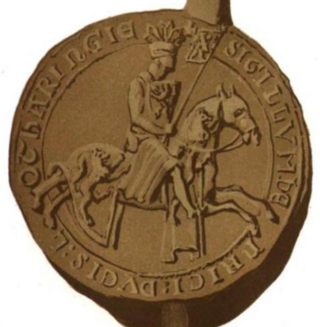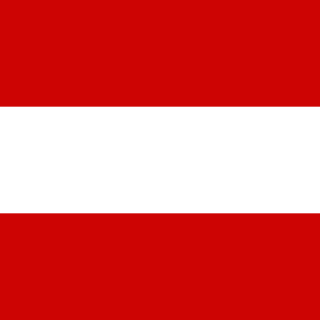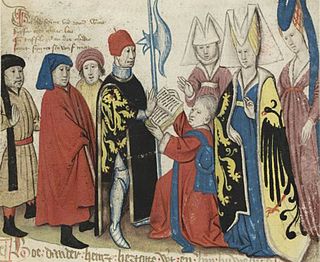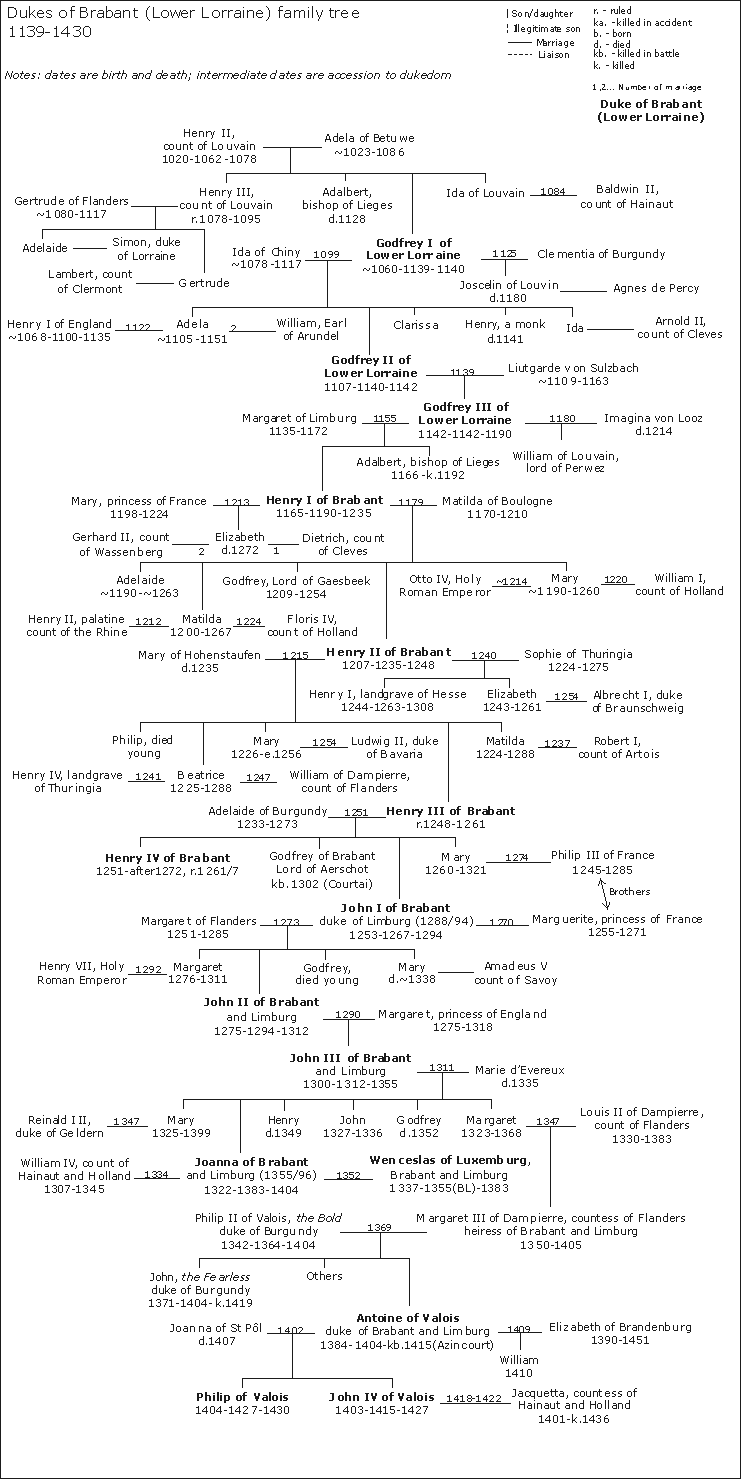
John I, also called John the Victorious was Duke of Brabant (1267–1294), Lothier and Limburg (1288–1294). During the 13th century, John I was venerated as a folk hero. He has been painted as the perfect model of a brave, adventurous and chivalrous feudal prince.

Henry II of Brabant was Duke of Brabant and Lothier after the death of his father Henry I in 1235. His mother was Matilda of Boulogne.

Henry III of Brabant was Duke of Brabant between 1248 and his death. He was the son of Henry II of Brabant and Marie of Hohenstaufen. He was also a trouvère.

The Counts of Louvain were a branch of the Lotharingian House of Reginar which from the late 10th century ruled over the estates of Louvain (French) or Leuven (Dutch) in Lower Lorraine.

Anthony, Duke of Brabant, also known as Antoine de Brabant, Antoine de Bourgogne and Anthony of Burgundy, was Count of Rethel (1402–1406), Duke of Brabant, Lothier and Limburg (1406–1415), and Co-Duke of Luxemburg (1411-1415). He was killed at the battle of Agincourt.

The Duchy of Limburg or Limbourg was an imperial estate of the Holy Roman Empire. Much of the area of the duchy is today located within Liège Province of Belgium, with a small portion in the municipality of Voeren, an exclave of the neighbouring Limburg Province. Its chief town was Limbourg-sur-Vesdre, in today's Liège Province.

Godfrey I, called the Bearded, the Courageous, or the Great, was the Landgrave of Brabant, Count of Brussels and Leuven (Louvain) from 1095 to his death and Duke of Lower Lorraine from 1106 to 1129. He was also Margrave of Antwerp from 1106 to his death.
The Duke of Lothier was purely an honorific title. It is often associated with the territory within the Duchy of Lower Lotharingia, governed by the dukes of Brabant and their successors after 1190 until the end of the Ancien Régime in 1796.

The Duchy of Lower Lotharingia, also called Northern Lotharingia, Lower Lorraine or Northern Lorraine, was a stem duchy of the medieval Kingdom of Germany established in 959, which encompassed almost all of modern Belgium, Luxemburg, the northern part of the German Rhineland province and the eastern parts of France's Nord-Pas de Calais region. It also included almost all of modern Netherlands.

The Duchy of Brabant, a state of the Holy Roman Empire, was established in 1183. It developed from the Landgraviate of Brabant of 1085–1183, and formed the heart of the historic Low Countries. The Duchy comprised part of the Burgundian Netherlands from 1430 and of the Habsburg Netherlands from 1482, until it was partitioned after the Dutch revolt of 1566–1648.

Georg Donatus, Hereditary Grand Duke of Hesse was the first child of Ernest Louis, Grand Duke of Hesse, and his second wife, Princess Eleonore of Solms-Hohensolms-Lich. He was a nephew of Empress Alexandra and Emperor Nicholas II of Russia, as well as a great-grandson of Queen Victoria.

The Count of Hainaut was the ruler of the county of Hainaut, a historical region in the Low Countries. In English-language historical sources, the title is often given the older spelling Hainault.

The Reginarids were a family of magnates in Lower Lotharingia during the Carolingian and Ottonian period. Their modern name is derived from the personal name which many members of the family bore, and which is seen as a Leitname of the family. At least two Dukes of Lotharingia in the 10th century belonged to this family. After a period of exile and rebellion, the two brothers who returned to power founded the first dynasties of the County of Hainault and County of Louvain. The latter were ancestors of the House of Brabant, Landgraves and later Dukes of Brabant, Lothier and Limburg. The Reginarid Brabant dynasty ended in 1355, leaving its duchies to the House of Luxembourg which in turn left them to the House of Valois-Burgundy in 1383. Junior branches of the male line include the medieval male line of the English House of Percy, Earls of Northumberland, and the German House of Hesse which ruled Hesse from 1264 until 1918, included King Frederick of Sweden and still exists today.

Maria of Swabia was a member of the powerful Hohenstaufen dynasty of German kings.

The Duchess of Brabant refers to a woman married to the Duke of Brabant. But this was only as of 1840 when it was revived as an honorific title for the Crown Prince of the newly created Kingdom of Belgium. There have been only three royal duchesses.
Gertrude of Flanders, was a Countess of Louvain and Landgravine of Brabant by marriage to Henry III, Count of Leuven, and a Duchess of Lorraine by marriage to Theodoric II, Duke of Lorraine. At the time the duchy was the upper Lorraine, since 959 separated from the duchy of Lower Lorraine.



















